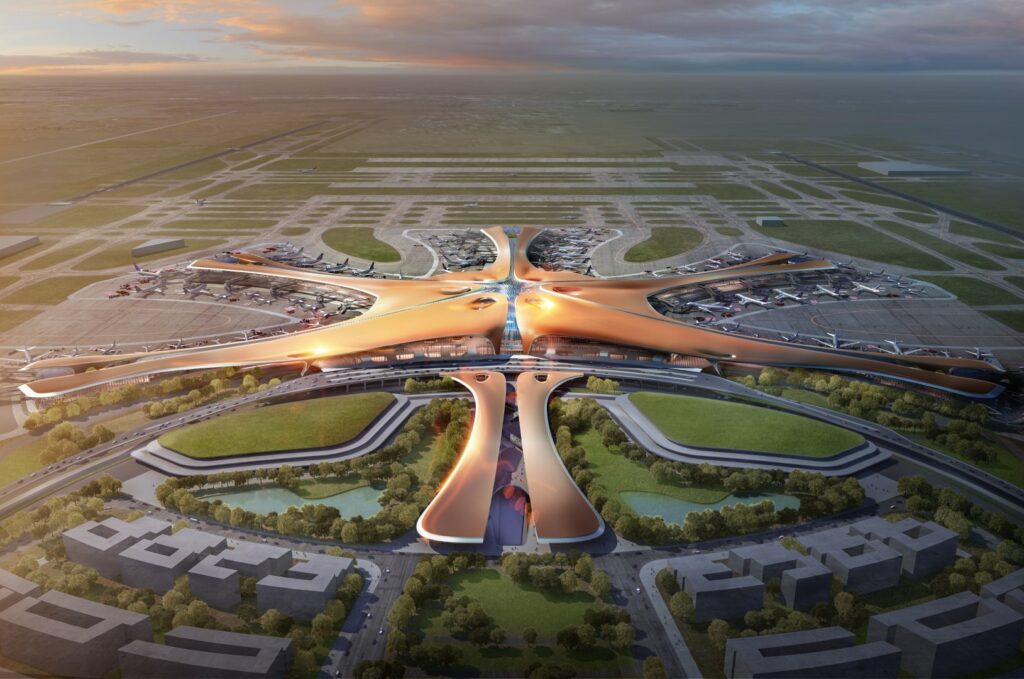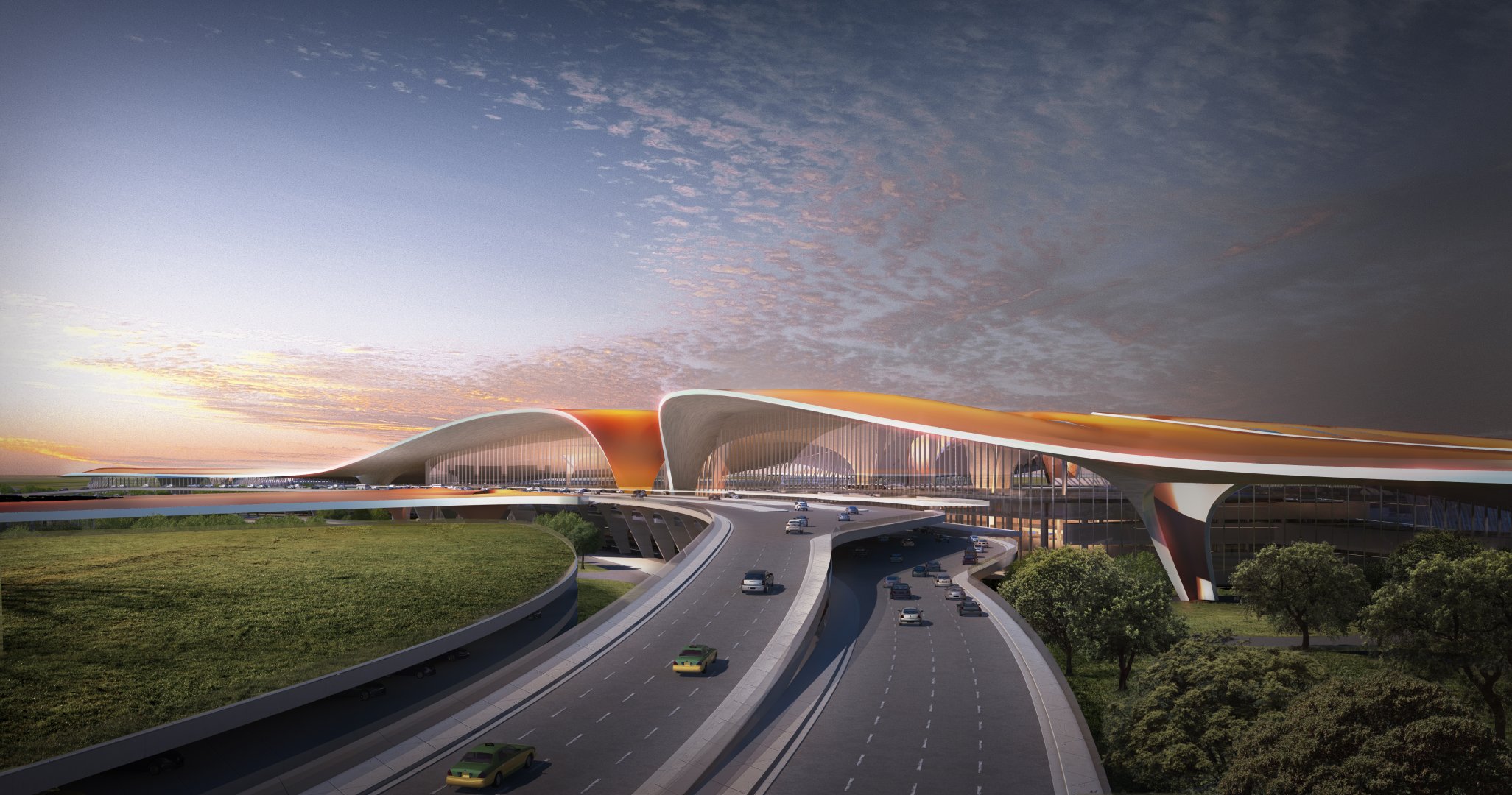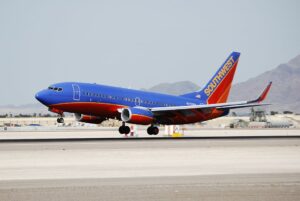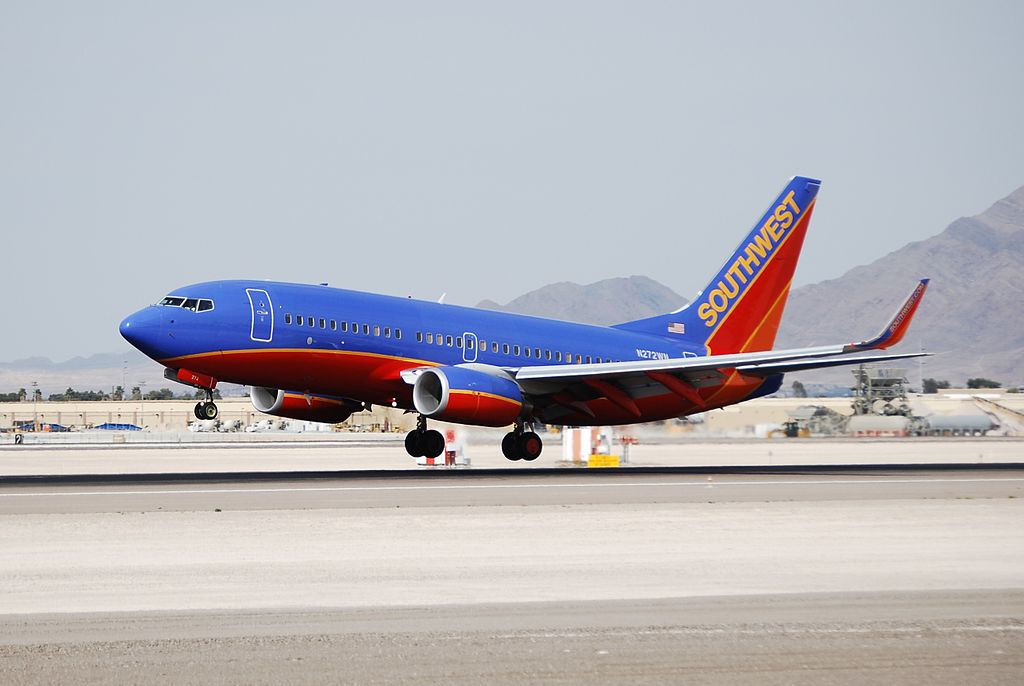It’s Always Bigger in Beijing: Everything We Know About Daxing International

In 2008, China officially opened the new Terminal 3 at Beijing Capital International Airport, at the time the largest in the world, boasting 10,600,000 square feet (244 acres) of space. It was lauded as an architectural achievement, ready to welcome world visitors traveling to China in droves for the Olympic games held that year.
While it had a few teething problems, it was hard to ignore the monumental effort that China put into the creation of this behemoth. So why, less than 15 years later, does Beijing need a giant new airport?
The Meteoric Rise of the Chinese Aviation Market
In 2017, Boeing predicted that airlines based in China would spend nearly US$1.1tn to buy over 7,000 new airplanes by 2037, in response to a rapid rise in domestic and international aviation demand. This would represent a whopping 20% of the demand for new aircraft over the same period.
Where has this demand come from? Largely, an expanding Chinese middle class with a taste for flying. China’s economy has embraced a consumerist mindset, and this is likely to support strong passenger demand. The IATA predicts that, within just a few years, the Chinese aviation market will displace the United States as the world’s largest in the mid-2020s.
The phenomenon is widespread across China, too. In 2018, the Civil Aviation Administration of China (CAAC) announced that it planned to build another 74 airports by 2020, in order to keep pace with increasing demand, in addition to expanding another 139 airports. Even when Terminal 3 was opened in Beijing in 2008, the General Manager at the time – Zhang Zhigong – announced that planning for a new airport had begun, as it was expected that the newly built facilities would be outgrown by 2015. He was a bit generous in his predictions. By 2013, passenger demand at Beijing Capital had outstripped capacity.
Daxing Is Scheduled to Open Later in 2019

On 30 June 2017, a topping out ceremony was held, opening a new chapter in Chinese aviation – the worlds largest single terminal airport. On May 13, 2019, the first test flights occurred. With 220,000 tons of steel and at a cost of around 14 billion USD, the Beijing Daxing terminal is a sight to behold. The Guardian newspaper certainly agrees, having named it one of the modern wonders of the world.
Designed by the (late) British-Iraqi architect Zaha Hadid to handle over 100 million passengers per annum, it’s the size of over 97 football fields, or 63 Tian’anmen Squares, or two-thirds the size of Manhattan Island. Don’t worry though – with transportation links, shopping malls, food and drink, and five traditional Chinese gardens, you could quite happily waste many hours within its spacious interior.
It’s embracing a few new technologies in its design, too. It will host four runways at opening, with the intention of expanding to six or eight over time. It will not only be the world’s largest terminal, but boast one of the world’s largest roof structures, and has been created using base isolation techniques for stability. Even the use of its single terminal design is revolutionary, with five large spokes leading off a central hub, hoping to minimalize the amount of walking for weary travelers. That probably explains the 172 elevators and 62 moving walkways within the cavernous building.
No gate is located more than one-third of a mile from the central atrium, helping to support minimum connection times. Specialized facilities for domestic frequent flyers are also being developed, to help ensure the swift facilitation of those who will use the airport on a regular basis.
It is a bit of a hike to the city, though. The site is going to boast an 80,000 square meter in ground transportation center and is being lauded as a multi-modal transport hub of the future. Passengers will be able to make the 50-mile journey to Beijing City by subway or get to the airport from the neighboring Tianjin province via a high-speed rail network.
But Who Is Going to Fly There?
With recent shuffling amongst alliance partners in the Chinese aviation market, a bit of a scuffle has ensued on who will utilize the new facilities. The “big three” – Air China, China Southern, and China Eastern – hold around two-thirds of the Chinese domestic aviation market. Of course, all of them want to hold slots at the shiny new airport – and a series of political intrigue and backroom bargaining has been underway to fight for them.
Earlier plans released by the CAAC had stated that domestic and international operations couldn’t happen simultaneously at Beijing Capital and Beijing Daxing – it would have to be one or the other. It also said that Air China would remain at Beijing Capital, with China Southern and China Eastern moving to Daxing. However, in June 2019, the CAAC announced that Air China would be given 10% of slots at the new airport, and China Southern and China Eastern 30% each – with Chinese Eastern being able to retain its lucrative Beijing to Shanghai route at Beijing Capital.
Simply put, and summarised by the Bangkok Post, for every 10 flights departing or entering Daxing, China Southern will get to operate four, China Eastern three and Air China one, with the other two slots going to smaller Chinese or international carriers. Smaller airlines, such as Xiamen Air, Beijing Capital Airlines, and China United, have also shown a desire for slots at Daxing.
It’s Not All Smooth Sailing – or Flying

The new airport is not without its controversy. The fact that thousands of sub-standard houses have been demolished to make way for the airport has not escaped the attention of the Chinese and international community, with the Government claiming the destruction is in the name of safer housing conditions. Economists haven’t failed to notice the Chinese Government’s reliance on large infrastructure projects to drive growth. And although the airport is slated to be a paradigm of environmental design, the Chinese lust for concrete paints a different picture.
While the sheer amount of demand for air travel in China is huge, anyone who has been stuck on the tarmac in Beijing or Shanghai will be well aware of the delays faced when traveling by air in China. The Peoples Liberation Army has control of around 70 – 80% of Chinese airspace, with the remaining ‘free’ corridors getting more and more crowded as air travel grows in popularity. In fact, aviation experts have stated that the new airport might not even be entirely necessary – and that loosened controls over the airways would help to ease capacity issues. However, it doesn’t look like the Chinese government will be easing up airspace control anytime soon.
If you’re planning on flying into Beijing Daxing in 2020, one thing is for certain. You’ll have some excellent facilities to spend your time waiting in, given your flight has a nearly 30% chance of being delayed. Time to pick up some souvenirs.
[Images: Zaha Hadid Architects]

























No kidding on waiting on the plane for a departure slot at any of the major airports. One thing the Chinese have to at least most of the major cities is comfortable and efficient high speed rail. While I do both fly and HSR when I'm there, I'd prefer HSR if I was going PEK-PVG. Tianjin isn't exactly right next door to Beijing either.